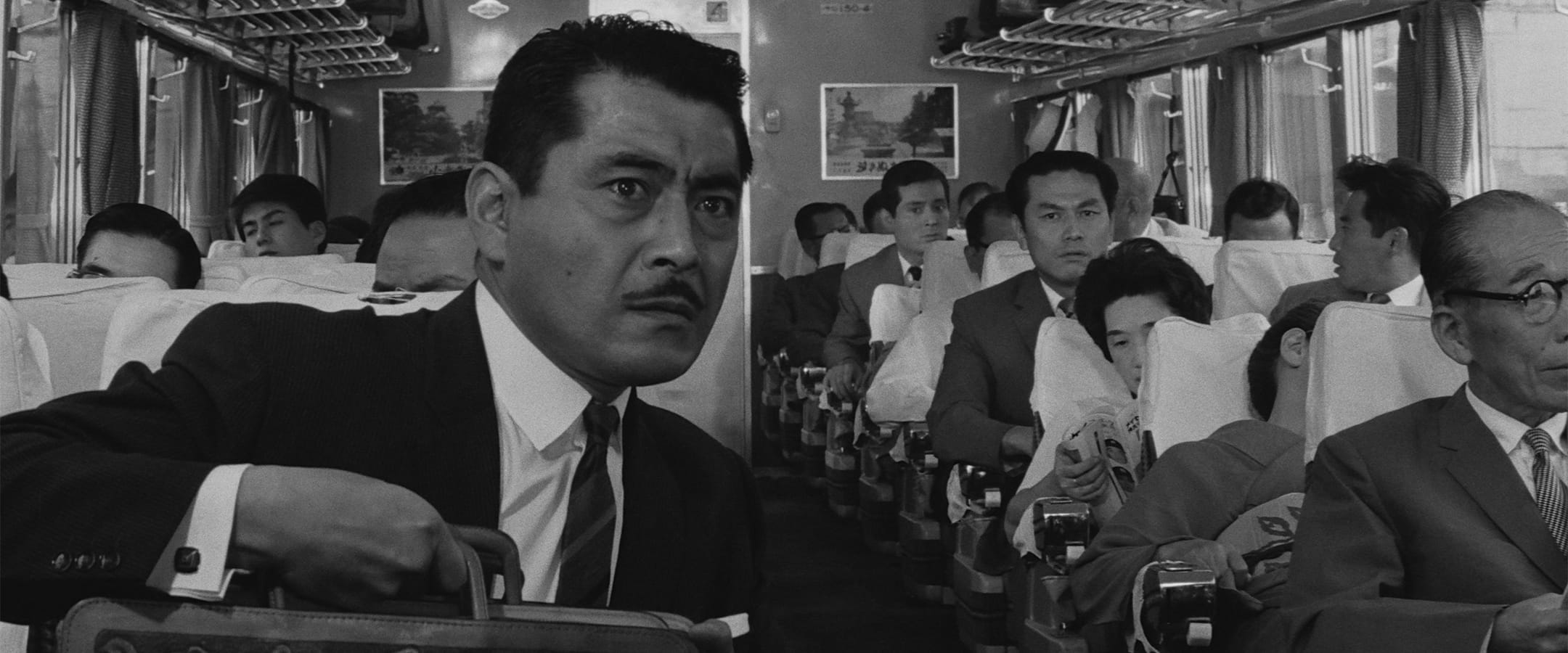Film Review: High and Low (1963)

Countless crime thrillers had been made before Akira Kurosawa’s High and Low, and even more were made after, but certainly this 1963 triumph was a turning point for the genre. Even today, this extraordinary film stands as a blueprint for how to blend evocative storytelling with rigid proceduralism to create tightly crafted drama and tension. Nearly Shakespearean in its examination of the lines between both right and wrong and rich and poor, High and Low never falters in its humanism, despite the rather grisly nature of its subject matter.
As Japan’s most “western” director, Kurosawa had a knack for taking stories considered expressly American or European and turning them into groundbreaking works of international cinema. Whether it be reworking the tropes found in American genre films like westerns and gangster pictures or reskinning Shakespeare to fit into a feudal Japanese setting, Kurosawa had a knack for seeing the international appeal of all kinds of stories.
With High and Low, Kurosawa takes a middling American crime novel by Ed McBain (the pen name of writer Evan Hunter, who also wrote Blackboard Jungle) called King’s Ransom and turns it into a multi-layered story about class, duty, and humanism. Kurosawa frees McBain’s story from its pulp origins and elevates it to heights far beyond what dime novel trappings generally allow. While 1950s crime novels certainly explored the depths of human depravity, readers rarely came out the other side feeling uplifted or better about the world as a whole. High and Low, in contrast to pulp and film noir’s signature fatalism, ends on an encouraging high note.
When broken down, High and Low essentially takes place in two parts: the crime and the investigation. The film opens as Kingo Gondo, a wealthy executive (Toshiro Mifune, who is, as always, outstanding), secretly vies for control of the successful shoe company he works for. As he’s preoccupied with the details, kidnappers mistakenly abduct Shinichi (Masahiko Shimizu), the young son of Gondo’s chauffeur (Yutaka Sada), instead of their intended target, Gondo’s son Jun (Toshio Egi). Despite their mistake, the kidnappers still demand a hefty ransom for Shinichi’s safe return.
Over the course of the next several scenes, Gondo, his wife (Kyōko Kagawa), his trusted secretary (Tatsuya Mihashi), the chauffeur, and the police debate the moral and financial ramifications of giving in to the kidnapper’s demands. What’s remarkable about these tension-filled and emotional scenes is that even though, from the very start, Gondo refuses to pay the ransom, his facial expressions, mannerisms, and wavering tone of voice betray his resolve. Time and again, he points out that he’ll be ruined if he gives up the money, and time and again, it’s clear he’s conflicted.
As someone whose entire identity is wrapped up in his work ethic, financial success, and social standing, Gondo has great difficulty outwardly balancing the artifice of these elements with the life of a child who isn’t his. Inwardly, he knows what the right thing to do is, but it takes extreme circumstances for his humanity to overcome his capitalist nature. Watching Mifune navigate Gondo’s conflicted predicament is a sight to behold, as the veteran actor simultaneously exudes both an outspoken and uncaring selfishness and a terrified yet very human urge to preserve life.
From here, High and Low shifts from Gondo’s internal conflict to the payment of the ransom, followed by the investigation into the kidnappers, their motives, and techniques. Kurosawa goes into extreme procedural detail during the film’s second half, devoting lengthy but entertaining looks into every aspect of the investigation. It’s also where the film’s class consciousness comes fully into view, as Kurosawa takes great pains to show the quality of life differences between the rich, who live high in the hills, and the poor, who are forced to toil away in the overheated, overcrowded slums that lay far below their lofty homes. As always, Kurosawa’s attention to technical detail, along with his unwavering commitment to exploring the human condition, combine in ways that capture both the harsh realities of contemporary life under capitalism and the wonderful ways in which humanity can shine when given the opportunity.

Japan • 1963 • 143 minutes • Black & White • 2:35:1 • Japanese • Spine #24
Criterion Special Features Include
- Restored high-definition digital transfer, with original four-track surround sound
- Audio commentary by Akira Kurosawa scholar Stephen Prince
- A thirty-seven-minute documentary on the making of High and Low, created as part of the Toho Masterworks series Akira Kurosawa: It Is Wonderful to Create
- Rare interview with actor Toshiro Mifune from 1984
- Interview with actor Tsutomu Yamazaki
- Theatrical trailers from Japan and the U.S.
- PLUS: An essay by critic Geoffrey O’Brien and, for the Blu-ray edition, an on-set account by Japanese-film scholar Donald Richie
